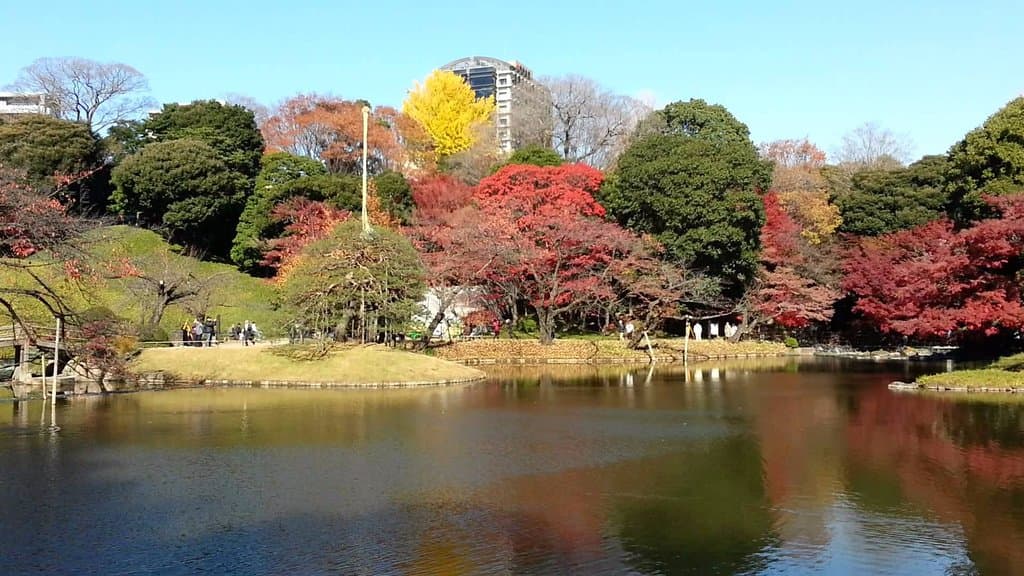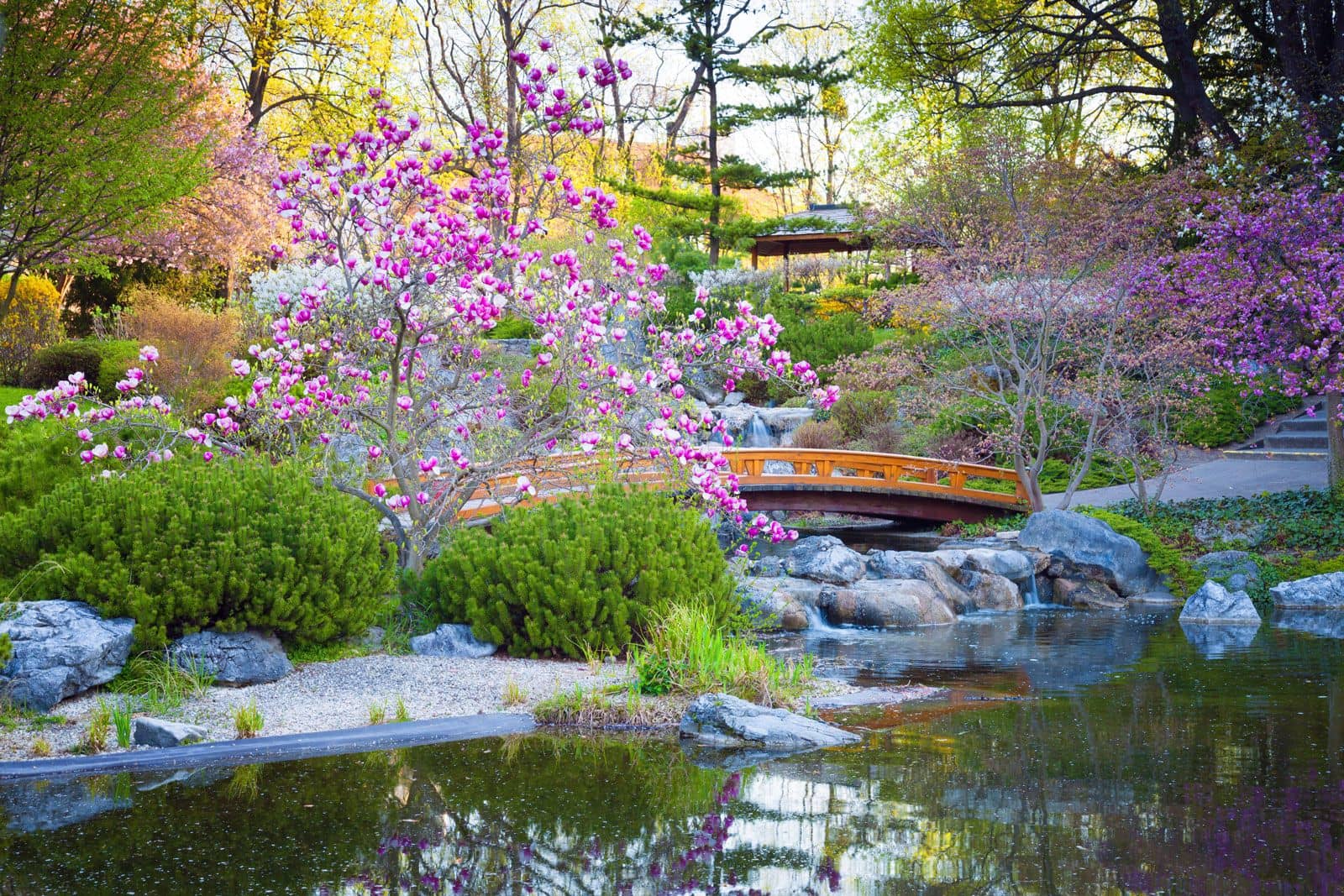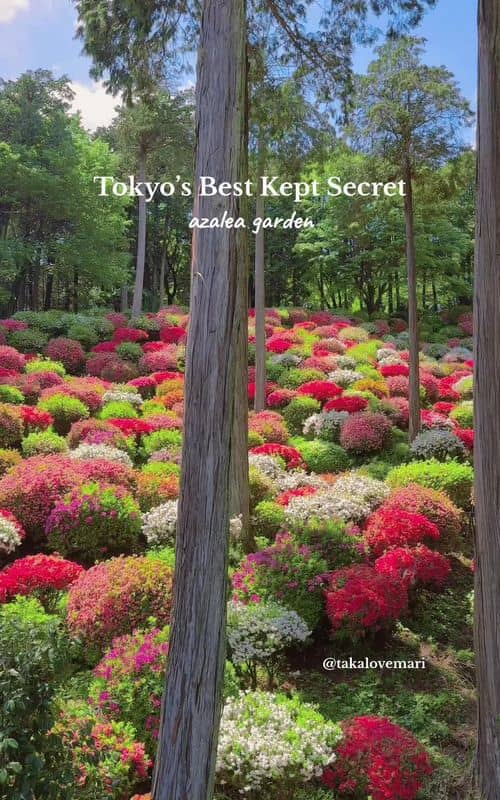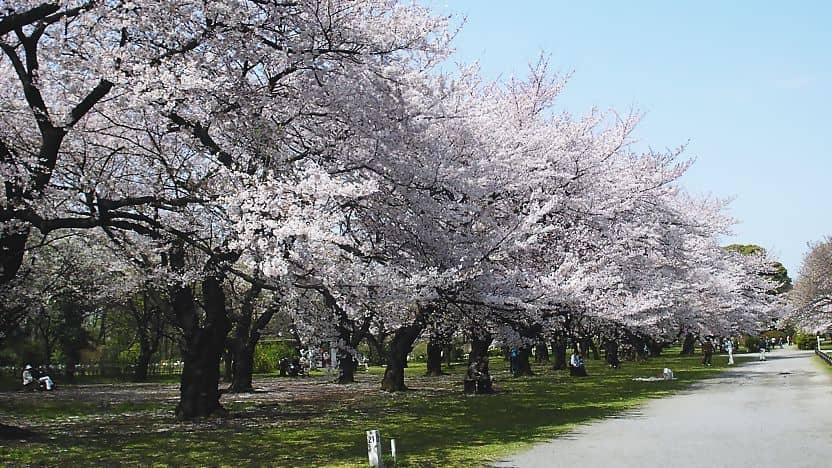
Koishikawa Botanical Garden Tokyo
A historic botanical garden in Tokyo, offering a serene escape with diverse flora, tranquil paths, and seasonal beauty.

Highlights
Must-see attractions

Social
From TikTok & Reddit
Best Time
Cherry blossoms & azaleas bloom

Koishikawa Botanical Garden Tokyo
Best Time
Cherry blossoms & azaleas bloom

Highlights
Must-see attractions
A historic botanical garden in Tokyo, offering a serene escape with diverse flora, tranquil paths, and seasonal beauty.
"A quiet oasis with centuries of history, perfect for nature lovers and peace seekers."

🚶♀️ Peaceful Escape
Find a quiet spot to relax and enjoy nature's beauty away from Tokyo's hustle.
🌸 Cherry Blossom Spot
Seek a more peaceful cherry blossom viewing experience than crowded city spots.

Highlights
Discover the most iconic attractions and experiences

Edo Period History
Throughout the garden
Wander through grounds that have witnessed centuries of history, offering a glimpse into Japan's past.

Seasonal Flower Displays
Various garden sections
From vibrant azaleas to stunning autumn leaves, experience nature's artistry throughout the year.

Tranquil Walking Paths
Garden trails
Stroll along peaceful paths, enjoying the lush greenery and quiet atmosphere away from the city.
Plans like a pro.
Thinks like you
Planning Your Visit
Escape the City Buzz
Best Time for Blooms
Best Times
Insider Tips
from TikTok, Instagram & Reddit
🚶♀️ Peaceful Escape
Find a quiet spot to relax and enjoy nature's beauty away from Tokyo's hustle.
🌸 Cherry Blossom Spot
Seek a more peaceful cherry blossom viewing experience than crowded city spots.
🍂 Autumn Foliage Gem
One of central Tokyo's most beautiful spots for autumn colors.
🌳 Forest-like Ambiance
Experience a serene, forest-like atmosphere within the city.
Tips
from all over the internet
🚶♀️ Peaceful Escape
Find a quiet spot to relax and enjoy nature's beauty away from Tokyo's hustle.
🌸 Cherry Blossom Spot
Seek a more peaceful cherry blossom viewing experience than crowded city spots.
🍂 Autumn Foliage Gem
One of central Tokyo's most beautiful spots for autumn colors.
🌳 Forest-like Ambiance
Experience a serene, forest-like atmosphere within the city.
🧺 Picnic Potential
Enjoy a relaxing picnic amidst the beautiful lawns and greenery.
What Travellers Say
Reviews Summary
Visitors consistently praise Koishikawa Botanical Garden for its serene beauty and historical charm, offering a much-needed escape from Tokyo's urban intensity. While some note limited amenities, the overwhelming sentiment is one of peaceful enjoyment and appreciation for the well-maintained flora and tranquil atmosphere.
"Spectacular in every way, the oldest garden in Japan, a place so rich in history that it deserves more than just a brief stop. It’s a large space. Come early on a nice day to get the best benefit from the experience. Easily among the best Japanese gardens in Tokyo."
David Boe
"Visited on April 6, 2025
Beautiful in all seasons. Less crowded during Sakura season. Perfect for picnics. there are fewer number of sakura trees than other famous spots but the trees are well maintained and can enjoy flowers up close. The Japanese garden area is absolutely stunning.
* Entry fee: 500 yen (per person)
* no trash cans, bring back all your trash."
Ananya S Tabassum
"Koishikawa Botanical Garden was truly a forest, with trees that looked to be 30 meters tall everywhere. I was happy and slightly shocked to find such a vast forest just 3 kilometers from the Imperial Palace. It's azalea season now, and I didn't know for the first time that tall azalea trees as tall as a person existed. I must visit Koishikawa Botanical Garden again."
Kaz Shimizu
What People Like
What People Dislike
Frequently Asked Questions
🚇 🗺️ Getting There
The garden is accessible via public transport. Take the JR Chuo Line to Suidobashi Station or the Tokyo Metro Marunouchi Line to Korakuen Station. From either station, it's a pleasant walk to the garden entrance.
Yes, it's located in Bunkyo Ward and is relatively close to the Tokyo Dome City complex, offering a mix of nature and entertainment.
The closest stations are Suidobashi (JR Chuo Line) and Korakuen (Tokyo Metro Marunouchi Line). Both offer a short walk to the garden.
Parking is generally limited, so public transportation is highly recommended for visitors.
Taxis are an option, but traffic in Tokyo can be unpredictable. Public transport is often more efficient for reaching the garden.
🎫 🎫 Tickets & Entry
The garden is typically open from 9:00 AM to 4:00 PM (last entry at 3:30 PM), but hours can vary seasonally. It's best to check the official website for the most up-to-date information.
Admission is usually very affordable, often around ¥300 for adults. Students and seniors may have discounted rates.
Advance booking is generally not required for individual visitors. You can purchase tickets at the entrance.
The garden is typically closed on Mondays and during the New Year holidays. Always verify current closure dates before your visit.
The garden hosts various seasonal events and exhibitions, especially related to plant life. Check their schedule for any ongoing activities.
🎫 🌿 Onsite Experience
Explore diverse plant collections, historical sites, serene lawns for picnics, and peaceful walking paths. It's a great place for nature lovers and photographers.
Absolutely! The garden offers beautiful scenery year-round, with stunning seasonal flowers and foliage, making it a popular spot for photographers.
Yes, there are lawns available for picnicking, allowing you to enjoy a meal surrounded by nature.
While many paths are paved, some areas might be uneven. It's advisable to check accessibility details on their official website or inquire upon arrival.
The garden features a wide variety of plants, including native Japanese species, medicinal herbs, and seasonal flowers, reflecting its history as a research garden.
🍽️ 🍽️ Food & Dining
There are no restaurants or cafes within the garden itself. Visitors are encouraged to bring their own food for picnics or dine at nearby establishments outside the garden.
Yes, bringing food and drinks for picnics is permitted, and there are designated areas for enjoying them.
The areas around Korakuen Station and Suidobashi Station offer various dining options, from casual eateries to more formal restaurants.
Vending machines are not typically available inside the garden, so it's best to come prepared with any beverages you might need.
Simple, easy-to-eat items like onigiri (rice balls), sandwiches, and bento boxes are perfect for a picnic in the garden.
📸 📸 Photography
Look for areas with seasonal blooms like azaleas and cherry blossoms, the vibrant autumn foliage, and the serene, forest-like sections of the garden.
Yes, photography for personal use is generally allowed. However, commercial photography may require special permission.
Early mornings or late afternoons often provide softer light, ideal for capturing the garden's beauty without harsh shadows.
Drone usage is typically prohibited in botanical gardens and parks to ensure the safety and tranquility of visitors and the environment.
A versatile lens (like a 24-70mm) is great for landscapes and details. A wide-angle lens can capture the expansive views, and a macro lens is useful for close-ups of flowers.
For Different Travelers
Tailored advice for your travel style
👨👩👧 Families with Kids
Consider bringing a small nature guide or a scavenger hunt list to make the visit more interactive for younger ones. The garden's historical aspect can also be a gentle introduction to Japan's past. Remember to pack snacks and drinks, as on-site facilities are limited.
🚶♀️ Solo Travelers & Peace Seekers
It's a great place to escape the typical tourist hustle and bustle of Tokyo. The garden's historical roots also add a layer of depth to the experience, allowing for a more mindful and reflective visit.
📸 Nature Photographers
Visiting during the early morning or late afternoon can yield the best light for photography. The garden's peaceful ambiance also allows photographers to set up and capture shots without disturbance.
Deep Dives
In-depth insights and expert knowledge
A Living Museum of Flora
This dedication to botanical diversity means there's always something new to discover, regardless of the season. From the delicate blooms of spring to the rich hues of autumn, the garden offers a dynamic visual experience. It's a place where you can learn about plant life while immersing yourself in a tranquil, natural setting, making it a unique destination for both education and relaxation.
Many visitors are surprised by the sheer variety and the well-maintained condition of the gardens. The presence of the University of Tokyo adds an academic layer, with information often available about the plants' scientific names and origins. It’s a testament to the ongoing efforts to preserve and showcase Japan's rich botanical heritage.
Finding Serenity in the City
Many visitors highlight the garden's ability to feel like a hidden forest, despite its central Tokyo location. This sense of discovery and seclusion is a major draw, especially for those seeking a break from the typical tourist crowds. Whether you're enjoying a quiet moment by a pond or simply strolling through the trees, the atmosphere is one of profound tranquility.
The garden's design thoughtfully incorporates elements that enhance its peaceful ambiance. The gentle rustling of leaves, the chirping of birds, and the subtle fragrance of flowers create an immersive natural experience. It’s an ideal spot for meditation, reading, or simply enjoying a moment of quiet reflection.
A Photographer's Paradise
Instagram reels and TikTok videos often showcase the garden's photogenic qualities, highlighting specific spots that capture the essence of each season. The historical elements, such as old trees and traditional garden features, add depth and character to photographs. The natural light filtering through the trees creates a beautiful, diffused effect, perfect for capturing the garden's serene atmosphere.
For the best photographic results, consider visiting during the 'golden hours' – early morning or late afternoon – when the light is soft and warm. Experiment with different angles and focal lengths to capture both the grand landscapes and the intricate details of the flora. The garden's tranquility also means you can take your time to compose the perfect shot without feeling rushed.






Social
from TikTok, Instagram & Reddit